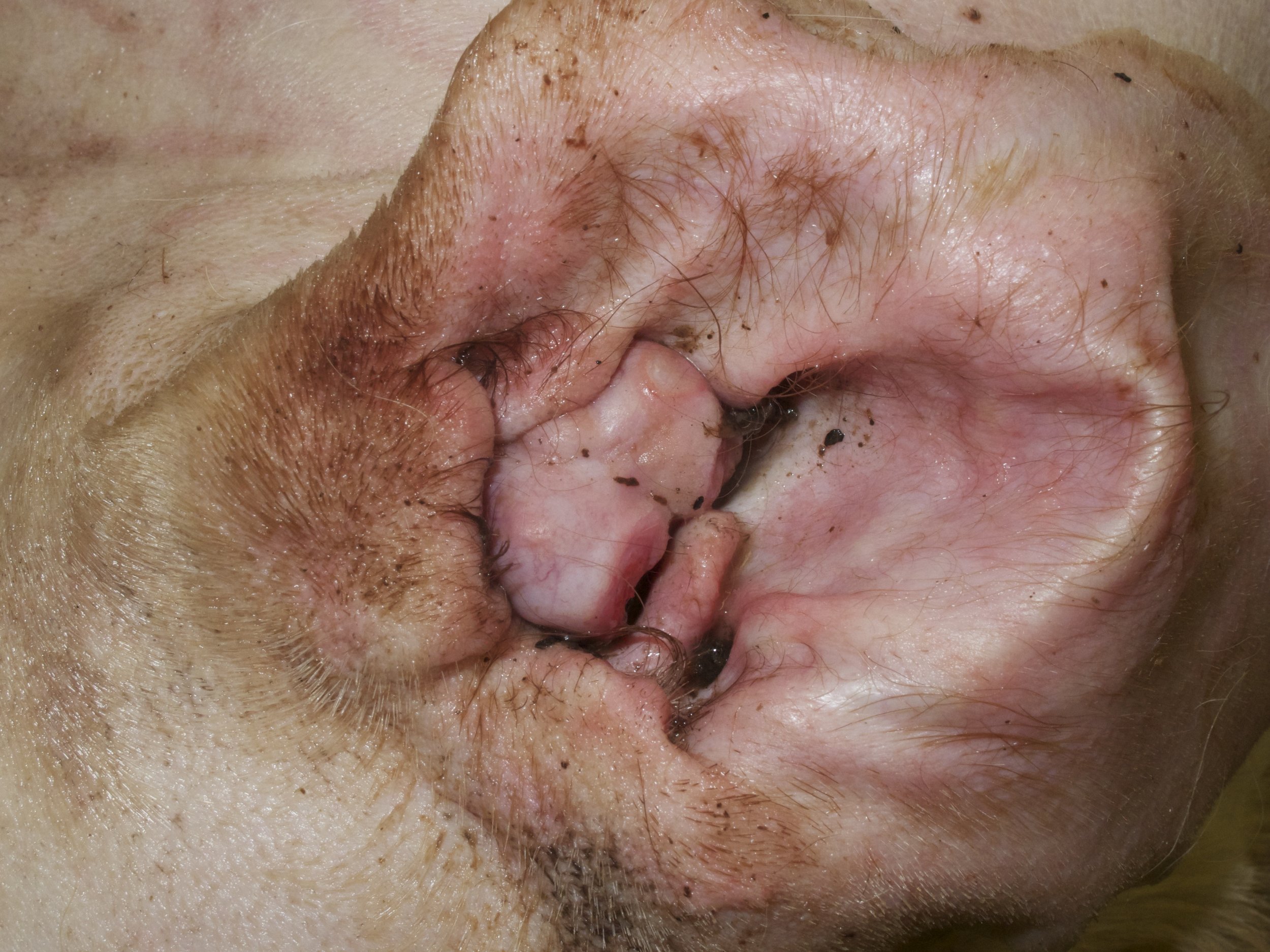ear tumors
BACKGROUND
Tumors of the ear can involve either the external ear canals or pinnae. The majority of ear canal tumors are malignant, although benign tumors are also reported. Ceruminous gland adenocarcinoma is the most common ear tumor in both cats and dogs. Other tumors include squamous cell carcinoma (SCC) and benign ceruminous gland adenomas and inflammatory polyps.
DIAGNOSIS
Ear tumors often cause ear discharge, odour and pain. Neurologic signs can be seen in up to 25% of cats and 10% of dogs because of invasion into tympanic bulla and brain. Benign tumors are often pedunculated with intact skin, whereas malignant tumors are often ulcerated and bleeding. Visual or otoscopic examination is required for confirmation of a mass arising from the ear canal, and biopsy is required for definitive diagnosis.
CLINICAL STAGING
CT is recommended to determine the extent of the tumor involvement of the ear canals and middle ear, assess the regional lymph nodes, and for surgical planning. Thoracic radiographs or CT scan are recommended to assess for metastasis to the lungs. Palpation and possibly aspiration of the regional lymph nodes should be performed to check for nodal metastasis.
TREATMENT
Surgical excision is the recommended treatment for cats and dogs with ear canal tumors. The extent of surgical excision depends on the location and type of the tumor. Benign tumors confined to the vertical ear canal can be excised with a vertical ear canal resection, whereas a total ear canal resection and lateral bulla osteotomy is recommended for benign tumors arising from the horizontal ear canal and all malignant tumors.
Radiation therapy can be used either primarily or as an adjunct following incomplete excision of malignant ear tumors.
Metastasis is rare with most malignant ear tumors, hence chemotherapy is rarely indicated for cats and dogs with non-metastatic malignant ear tumors.
PROGNOSIS
Cats
The prognosis for cats with ear tumors is dependent on tumor type, clinical signs and treatment options. Overall, the median survival time (MST) for cats with ear tumors following surgical excision is 12-50 months. Cats presenting with neurologic signs have a worse prognosis than cats with no neurologic signs (1.5 months compared to 15.5 months). Cats with tumors showing evidence of either lymphatic or vascular invasion on pathologic examination have a decreased survival time (MST 4 months compared to 22 months). Aggressive surgery has a significantly better outcome than conservative surgery because conservative surgery results in higher local tumor recurrence rates (66% compared to 25%) and decreased survival times (33% 12-month survival rate compared to 75%). Finally, cats with ceruminous gland adenocarcinoma have a significantly better survival time (MST 49 months) than cats with either SCC (4 months) or undifferentiated carcinoma (6 months).
Dogs
The prognosis for dogs with ear tumors is better than cats. Dogs with extensive tumor invasion have a significantly decreased survival time of only 5.3 months compared to > 58 months for dogs with non-invasive tumors. Aggressive surgery (total ear canal ablation-lateral bulla osteotomy) has a significantly better outcome than conservative surgery because conservative surgery (such as a lateral ear wall resection) results in significantly higher local tumor recurrence rates (75% compared to 0%) and decreased survival times (9 months compared to 36 months).
Last updated on 6th March 2017


















